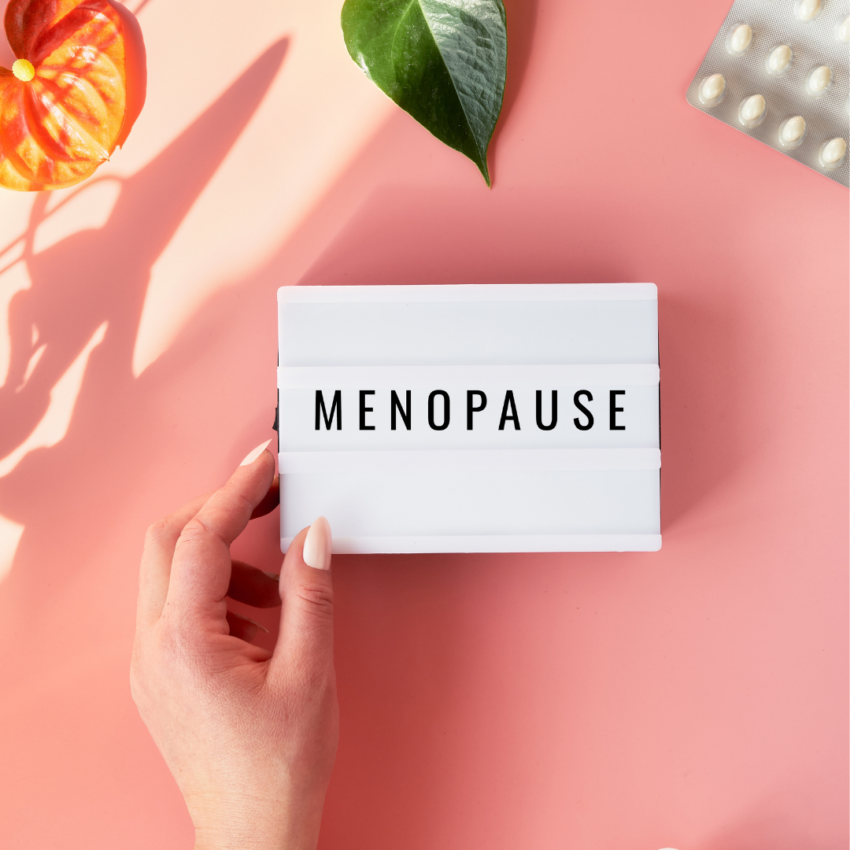Menopause can be a challenging phase for many women, as it brings along a range of symptoms that can disrupt daily life. From hot flashes and night sweats to mood swings and insomnia, the impact of menopause on a woman’s well-being is undeniable. However, if you’ve been wondering if there are alternative treatments available to alleviate these symptoms, you’ll be pleased to know that there are indeed options to explore. In this article, we will take a closer look at some alternative treatments for menopause symptoms that have shown promising results, giving you the opportunity to find relief and regain control over your body and mind. Let’s delve into the world of alternative therapies and discover the potential solutions that await you.

Hormone Replacement Therapy
Introduction to Hormone Replacement Therapy
Hormone Replacement Therapy (HRT) is a medical treatment that involves supplementing the body with hormones that decline during menopause. It aims to alleviate the various symptoms that women experience during this transitional phase. By replenishing estrogen and progesterone levels, HRT can help relieve hot flashes, night sweats, mood swings, vaginal dryness, and other discomforts associated with menopause.
Benefits of Hormone Replacement Therapy
Hormone Replacement Therapy has been widely studied, and research suggests it can provide significant benefits for menopausal women. Firstly, it effectively alleviates hot flashes and night sweats, reducing their frequency and intensity. HRT also helps maintain bone density, reducing the risk of osteoporosis and fractures. Additionally, hormone replacement therapy can improve vaginal health by reducing dryness and discomfort during intercourse. Furthermore, it may have a positive impact on mood, reducing feelings of anxiety and depression commonly experienced during menopause.
Risks and Side Effects of Hormone Replacement Therapy
While Hormone Replacement Therapy offers many benefits, it is important to be aware of the potential risks and side effects. Women on HRT may experience breast tenderness, bloating, and mood swings initially. It is also crucial to note that long-term use of combined hormone therapy (estrogen and progesterone) may slightly increase the risk of breast cancer, blood clots, stroke, and heart disease. However, for most women, the benefits of HRT outweigh the risks, especially when the therapy is started early in menopause and used for a short duration.
Alternative Hormone Therapies
If you are hesitant about traditional Hormone Replacement Therapy, there are alternative hormone therapies that might be worth exploring. Bioidentical hormone therapy (BHRT) is one such option. This approach utilizes hormones that are structurally identical to those naturally produced by the body. While BHRT is often customized for each individual, it is important to consult with a healthcare professional to determine the appropriate dosage and delivery method. Other alternatives include low-dose vaginal estrogen, which targets vaginal symptoms without systemic effects, and selective estrogen receptor modulators (SERMs), which can provide some relief from menopausal symptoms.
Herbal Remedies
Traditional Herbs Used for Menopause Symptoms
For centuries, traditional herbal remedies have been used to alleviate menopausal symptoms. Some commonly recommended herbs include black cohosh, red clover, dong quai, and evening primrose oil. Black cohosh, in particular, has shown promising results in reducing hot flashes and improving sleep quality. Red clover contains isoflavones that mimic estrogen in the body, providing relief from menopause symptoms. Dong quai is believed to regulate hormonal balance, while evening primrose oil may improve mood and reduce breast tenderness.
Effectiveness of Herbal Remedies
The effectiveness of herbal remedies in treating menopause symptoms varies among individuals. While some women may find significant relief, others may not experience the same benefits. It is important to remember that herbal remedies are not regulated by the FDA, therefore standardized dosages and quality control may vary across different products. Additionally, it is essential to consult with a qualified healthcare professional before starting any herbal treatment to ensure it is safe and appropriate for your specific situation.
Safety and Side Effects of Herbal Remedies
While herbal remedies are generally considered safe, it is crucial to be aware of potential side effects and interactions with other medications. Some herbs, like black cohosh, may cause digestive issues, headaches, or dizziness in certain individuals. Others, such as dong quai, should be avoided by those with bleeding disorders or taking blood-thinning medications. It is always advisable to consult with a healthcare provider before incorporating herbal remedies into your menopause management plan to ensure they do not interact negatively with any existing medications or conditions.
Acupuncture
Overview of Acupuncture
Acupuncture is an ancient Chinese practice that involves the insertion of thin needles into specific points on the body. It is based on the idea that these acupuncture points are interconnected through pathways called meridians, which conduct vital energy or “qi” throughout the body. By stimulating these points, acupuncture aims to restore the balance of qi and improve overall health.
Effectiveness of Acupuncture for Menopause Symptoms
Acupuncture has gained recognition as a potentially effective treatment for menopause symptoms. Several studies have shown that acupuncture can help reduce the frequency and intensity of hot flashes and night sweats. It may also improve sleep quality, mood, and overall quality of life. While the exact mechanisms by which acupuncture works are still being researched, it is believed to stimulate the release of endorphins and regulate the nervous system, leading to symptom relief.
Safety and Risks of Acupuncture
Acupuncture is generally safe when performed by a qualified and licensed practitioner. The needles used are sterilized and disposable, minimizing the risk of infection. However, some individuals may experience mild side effects such as minimal bleeding, bruising, or temporary soreness at the needle insertion sites. It is important to ensure that your acupuncturist is reputable and follows proper hygiene practices. Additionally, if you have a bleeding disorder or are taking blood-thinning medications, it is advisable to consult with your healthcare provider before undergoing acupuncture treatment.
Yoga and Meditation
Benefits of Yoga and Meditation for Menopause
Yoga and meditation offer various benefits for women going through menopause. Firstly, they promote relaxation and stress reduction, which can significantly alleviate menopausal symptoms such as hot flashes and mood swings. Regular practice of yoga and meditation can also improve sleep quality and reduce feelings of anxiety or depression. Moreover, these practices can enhance overall physical fitness, flexibility, and strength, contributing to a sense of well-being during this transitional phase of life.
Specific Yoga Poses for Menopause Symptoms
There are several yoga poses (asanas) that can specifically target common menopause symptoms. For hot flashes, forward bends and gentle twists can help calm the nervous system and regulate body temperature. Poses like Child’s Pose, Legs-Up-The-Wall, and Reclining Bound Angle Pose can provide relief from stress and anxiety. Additionally, yoga poses that stretch the pelvic area and hips, such as Butterfly Pose and Supine Hand to Big Toe Pose, can help with vaginal health and flexibility.
Meditation Techniques for Symptom Relief
Incorporating meditation into your daily routine can be highly beneficial for managing menopause symptoms. Mindfulness meditation, where you focus your attention on the present moment without judgment, can help reduce stress and promote a sense of calm. Deep breathing exercises, such as diaphragmatic breathing and alternate nostril breathing, can help regulate hormonal imbalances and improve overall well-being. Guided imagery meditation, visualizing a peaceful scene or positive outcomes, can also be effective in reducing anxiety and promoting relaxation.
Diet and Nutrition
Importance of a Healthy Diet in Menopause
Maintaining a healthy diet is crucial during menopause to support overall well-being and manage symptoms effectively. A well-rounded, nutrient-rich diet can help promote hormonal balance, boost energy levels, and support optimal physical and mental health. Additionally, a healthy diet can prevent weight gain, reduce the risk of chronic diseases, and enhance bone health, which is particularly important during menopause due to the increased risk of osteoporosis.
Foods to Include in the Diet
Including certain foods in your menopause diet can provide additional benefits and alleviate symptoms. Foods rich in phytoestrogens, such as soy products, flaxseeds, and legumes, can help balance hormone levels naturally. Calcium-rich foods like dairy products, leafy greens, and fortified plant-based milk can support bone health. Omega-3 fatty acids found in fatty fish, walnuts, and chia seeds can reduce inflammation and improve heart health. Lastly, incorporating plenty of fruits, vegetables, whole grains, and lean proteins into your diet can provide essential vitamins, minerals, and antioxidants necessary for overall well-being.
Foods to Avoid
Certain foods can exacerbate menopause symptoms and should be limited or avoided. Spicy foods, caffeine, and alcohol can trigger hot flashes and night sweats in some women. Highly processed and sugary foods can contribute to weight gain and worsen mood swings. It is also recommended to reduce the intake of saturated and trans fats, found in red meat and fried foods, as these can increase the risk of cardiovascular problems.
Supplements for Menopause Symptoms
While a well-balanced diet should be the primary source of nutrients, some women may benefit from supplements to manage specific menopausal symptoms. Calcium and vitamin D supplements can support bone health, especially for individuals who do not consume enough through their diet or have vitamin deficiencies. Black cohosh and red clover supplements may provide relief from hot flashes and night sweats. However, it is crucial to consult with a healthcare professional before starting any supplements to ensure they are safe and appropriate for you.
Exercise
Benefits of Exercise for Menopause Symptoms
Regular exercise offers numerous benefits for women experiencing menopause. Physical activity can help reduce the frequency and intensity of hot flashes, improve sleep quality, boost mood, and enhance overall well-being. Exercise also plays a crucial role in maintaining a healthy weight, managing stress, and preventing chronic diseases often associated with menopause, such as heart disease, diabetes, and osteoporosis.
Types of Exercise for Menopause Relief
There are various types of exercises that can be effective in relieving menopause symptoms. Aerobic exercises, such as brisk walking, swimming, cycling, or dancing, increase heart rate and circulation, promoting overall cardiovascular health and reducing hot flashes. Strength training exercises, using weights or resistance bands, are crucial for maintaining muscle mass and bone density. Flexibility exercises, like yoga or Pilates, can improve joint mobility and reduce stiffness. It is important to engage in a combination of all three types of exercise for optimal benefits.
Exercise Guidelines for Menopausal Women
When starting or maintaining an exercise routine during menopause, it is essential to consider certain guidelines. Firstly, it is recommended to engage in at least 150 minutes of moderate-intensity aerobic exercise or 75 minutes of vigorous-intensity exercise per week. Strength training exercises should be performed twice a week, targeting major muscle groups. It is important to warm up before exercising and cool down afterward to prevent injuries. Lastly, listen to your body and modify exercises as needed to accommodate any physical limitations or discomfort you may experience.
Biofeedback
Introduction to Biofeedback
Biofeedback is a technique that involves using electronic devices to measure and provide information about physiological processes in the body. Through the use of sensors, biofeedback monitors various parameters such as heart rate, skin temperature, and muscle tension. With this real-time information, individuals can learn to control and regulate these bodily responses consciously.
Effectiveness of Biofeedback for Menopause Symptoms
Biofeedback has shown promise in managing menopause symptoms, particularly hot flashes and night sweats. By monitoring changes in skin temperature, individuals can identify the early signs of a hot flash and employ relaxation techniques to prevent or minimize their occurrence. Additionally, biofeedback can help reduce stress and anxiety, thereby improving overall well-being during the menopausal transition.
How to Practice Biofeedback
While specialized equipment is often used in clinical settings, various biofeedback apps and devices are available for home use. These tools can measure different physiological parameters and provide real-time feedback. To practice biofeedback, find a quiet and comfortable environment. Follow the instructions provided with the device or app to set it up properly. Focus on observing the changes in your body and use relaxation techniques, such as deep breathing or guided imagery, to influence and regulate your physiological responses.
Mind-Body Techniques
Introduction to Mind-Body Techniques
Mind-Body Techniques encompass a range of practices that involve the connection between the mind and body to promote overall well-being. These techniques aim to harness the power of the mind to positively influence physical health and manage various symptoms. By incorporating techniques such as mindfulness, guided imagery, and affirmations, individuals can cultivate a better understanding of their body’s responses and learn to engage in self-care effectively.
Effectiveness of Mind-Body Techniques for Menopause Symptoms
Mind-Body Techniques have shown promising results in managing menopause symptoms. Mindfulness, the practice of focusing on the present moment without judgment, can enhance self-awareness and reduce stress, alleviating hot flashes and mood swings. Guided imagery, visualizing positive outcomes or peaceful scenes, can alleviate anxiety and promote relaxation. Affirmations, positive statements repeated regularly, can improve self-esteem and enhance coping abilities during the menopausal transition.
Specific Techniques to Try
Incorporating mind-body techniques into your daily routine can have a significant impact on your well-being during menopause. Start by exploring mindfulness practices, such as seated meditation or body scan exercises, which can be easily integrated into your day. Guided imagery can be practiced using recorded audio or visualization exercises. Affirmations can be developed to address specific challenges or concerns you may have during menopause. Experiment with different techniques to find the ones that resonate with you and consistently practice them to experience their benefits.

Massage Therapy
Benefits of Massage Therapy for Menopause Symptoms
Massage therapy offers numerous benefits for women experiencing menopause symptoms. It can help reduce muscle tension, improve circulation, and promote relaxation, thereby alleviating physical discomfort and reducing hot flashes. Massage therapy can also improve sleep quality, reduce stress and anxiety, and enhance overall emotional well-being. Additionally, certain massage techniques can address specific concerns like vaginal dryness or pelvic pain, providing relief and improving sexual health.
Types of Massage for Symptom Relief
Different types of massage therapy can be beneficial for managing menopause symptoms. Swedish massage, with long, flowing strokes, is effective in promoting relaxation and reducing muscle tension. Hot stone massage, where heated stones are placed on the body, can alleviate muscle soreness and promote overall relaxation. Deep tissue massage, with focused pressure on specific muscle groups, can help relieve chronic pain and stiffness. For specific concerns such as vaginal dryness, pelvic floor massage or abdominal massage can be beneficial in improving blood circulation and relieving discomfort.
Finding a Qualified Massage Therapist
When seeking massage therapy for menopause symptoms, it is crucial to find a qualified and licensed massage therapist. Consider recommendations from trusted sources or ask for referrals from healthcare professionals. Ensure that the massage therapist specializes in women’s health and has experience working with menopausal women. It is also important to communicate openly about your symptoms and concerns, allowing the massage therapist to tailor the treatment to your specific needs. Remember to inform them of any medical conditions or allergies you may have to ensure a safe and effective massage session.
Home Remedies
Sleeping Tips to Relieve Menopause Symptoms
Proper sleep is essential for managing menopause symptoms effectively. To improve sleep quality, establish a consistent sleep schedule by going to bed and waking up at the same time every day. Create a calming bedtime routine by engaging in relaxing activities like reading a book or taking a warm bath. Ensure your sleep environment is comfortable, cool, dark, and quiet. Avoid consuming stimulants like caffeine or nicotine close to bedtime and limit fluid intake to prevent nighttime trips to the bathroom. If hot flashes disrupt your sleep, use breathable bedding and consider investing in cooling pillows or mattress toppers.
Hot Flash Remedies
Hot flashes can be uncomfortable and disruptive, but there are several remedies that may help alleviate them. Wear lightweight, breathable clothing made from natural fibers like cotton. Dress in layers, allowing you to remove clothing as needed when a hot flash occurs. Keep your living and working environments cool by using fans or air conditioning. Practice deep breathing techniques or relaxation exercises when you feel a hot flash coming on to help manage the sensations. Additionally, modifying your diet to avoid trigger foods or beverages, such as spicy foods, caffeine, or alcohol, may help reduce the frequency or intensity of hot flashes.
Stress Relief Techniques
Managing stress is essential for a smoother menopausal transition. Incorporate stress relief techniques into your daily routine to promote emotional well-being. Engage in regular physical exercise, such as walking, swimming, or yoga, to release endorphins and reduce stress hormone levels. Practice deep breathing exercises to activate the body’s relaxation response. Engage in activities you enjoy, such as reading, listening to music, or pursuing hobbies, to distract from stressors. Seek support from friends, family, or support groups to share your experiences and receive emotional support. If stress becomes overwhelming, consider seeking professional help from a counselor or therapist.
In conclusion, menopause is a natural phase of life that can bring about various symptoms and challenges. While hormone replacement therapy is a widely recognized option for symptom management, alternative treatments can also provide relief. Herbal remedies, acupuncture, yoga and meditation, diet and nutrition, exercise, biofeedback, mind-body techniques, massage therapy, and home remedies offer a range of options to support women during their menopausal journey. It is important to consult with healthcare professionals to determine which treatments are safe and suitable for individual needs. By exploring these alternative treatments and incorporating them into a holistic approach, women can navigate menopause with greater comfort and well-being.



